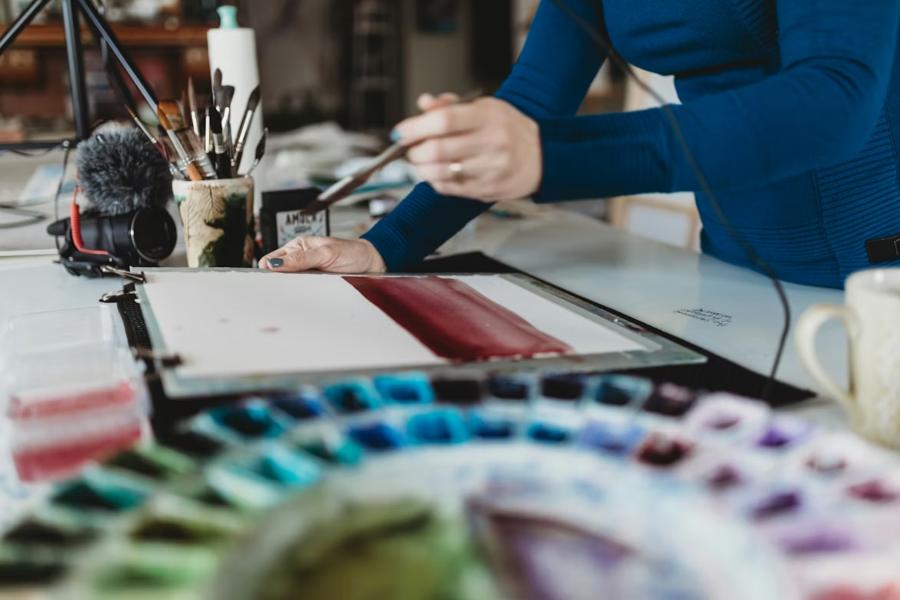In today’s hyper-connected world, every business whether a startup, a growing brand, or a well-established company—relies on creative assets more than it realises. From your brand name and product designs to the content on your website, these elements shape your identity, reputation, and long-term value. Yet, despite their importance, many businesses overlook one fundamental responsibility: protecting those assets before someone else takes advantage of them. With creativity becoming a currency of its own, Intellectual Property Lawyers now play an essential role in helping businesses safeguard what makes them unique.
The digital age has opened exciting opportunities, but it has also created an environment where copying, misuse, and imitation happen at incredible speed. A logo can be replicated in minutes, an idea can be stolen overnight, and an original product can be cloned and sold globally within weeks. This reality makes IP protection not just optional, but absolutely crucial for any business that wants to stay competitive, credible, and legally secure.
The Hidden Value Inside Every Business
Creative assets are more than just marketing materials. They are long-term business assets with tangible value. Trademarks protect your brand identity. Copyrights safeguard your written and visual content. Patents defend the functionality and design of new inventions. Together, they form a protective shield around your ideas, ensuring competitors can’t benefit from your work without consequences.
Many businesses only recognise this value when copycats appear. By then, the damage is often done—brand confusion spreads, revenue drops, and legal battles become more difficult. The smarter approach is to take action early. Securing rights to your creative assets doesn’t just prevent problems; it also opens new opportunities for licensing, partnerships, and expansion.
Why the Risk of Theft Is Higher Today
In the past, idea theft required effort. Someone had to see your product, recreate it, and distribute it physically. Today, everything is accessible from a screen. A design can be right-clicked and saved. A blog post can be duplicated. A product can be reverse-engineered using 3D-printing technology. With global marketplaces and social platforms accelerating the exposure of brands, original ideas spread faster—and so do imitations.
This growing risk makes it crucial for businesses to understand not only what needs protection but also how quickly they should act. Competitors, counterfeiters, and opportunists are always looking for gaps. Leaving your creative assets unprotected is like leaving the front door to your business wide open.
Building a Strong Protective Framework
Effective protection starts with identifying everything that holds creative or commercial value. This includes:
- Brand names and logos
- Taglines and slogans
- Product designs
- Website copy, blogs, and graphics
- Software code
- Educational materials
- Packaging designs
- Proprietary frameworks or processes
Once those elements are listed, the next step is understanding which type of protection applies. Copyright automatically covers certain materials, but trademarks and patents require formal registration to gain enforceable rights. This is where Intellectual Property Lawyers prove invaluable. Their expertise helps you determine what assets are eligible, how to register them properly, and how to monitor for potential infringements.
The Cost of Waiting Too Long
Businesses often assume they can delay protection until they grow bigger or become more visible. In reality, this is a risky mindset. The moment you begin operating, your ideas are exposed. If someone else registers a trademark similar to yours before you do, they might gain legal ownership of a brand identity you worked hard to build. Worse, you could be forced to rebrand entirely an expensive, time-consuming, and reputation-damaging process.
There are also financial consequences. Counterfeit products cost legitimate businesses billions each year. Digital plagiarism can reduce search engine visibility, dilute authority, and damage user trust. And once a competitor begins profiting from your ideas, recovering losses becomes far more complex than preventing them.
How Protection Strengthens Your Market Position
A protected brand is a powerful brand. Customers trust businesses that defend their identity because it signals professionalism and longevity. Investors value companies with clear ownership of creative assets because they pose fewer risks. Even expansion becomes smoother when your intellectual property is recognised across different markets.
For businesses looking to franchise, license products, or enter partnerships, strong IP protection forms the foundation of every contract. When your creative assets are properly registered and documented, you hold both legal and financial leverage.
Monitoring: The Often-Forgotten Step
Registering your creative assets is only half the job. The other half is monitoring how they’re being used across the digital and physical worlds. This includes watching for:
- Imitation products
- Similar brand names
- Unauthorised content reuse
- Copycat marketing materials
- Domain name squatters
- Counterfeit listings on e-commerce platforms
Modern monitoring tools make this easier, but consistent oversight is still essential. Businesses can work with Intellectual Property Lawyers to set up enforcement strategies, issue takedown notices, or start legal proceedings when necessary. Quick action prevents damage from spreading and reinforces your stance as a brand that values integrity.
A Future Where Creativity Is the Ultimate Advantage
The world is moving toward an economy shaped heavily by ideas, originality, and innovation. Whether you’re building software, designing products, creating educational content, or developing a brand story, your creativity is what sets you apart. That creativity deserves protection—not just to preserve your current success, but to open doors for future growth.
As competition increases and technology evolves, the businesses that thrive will be those that treat their creative assets as serious investments. Protecting them is no longer a luxury or a formality; it is a strategic necessity.


